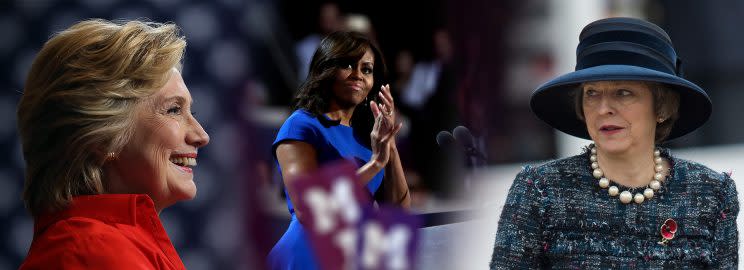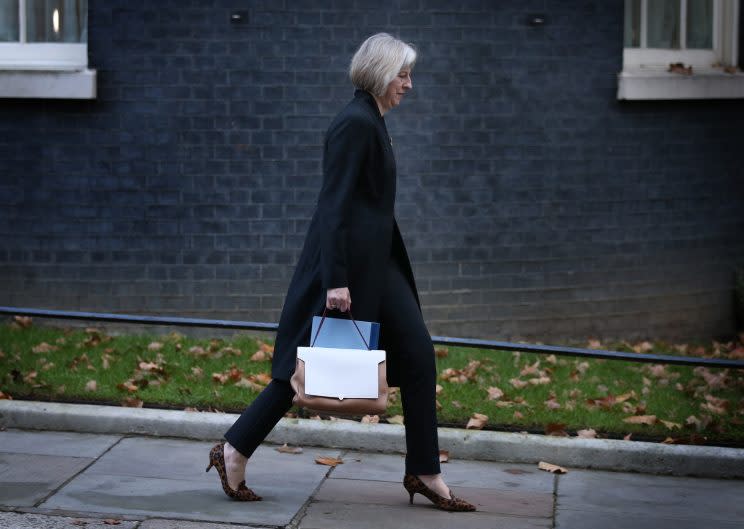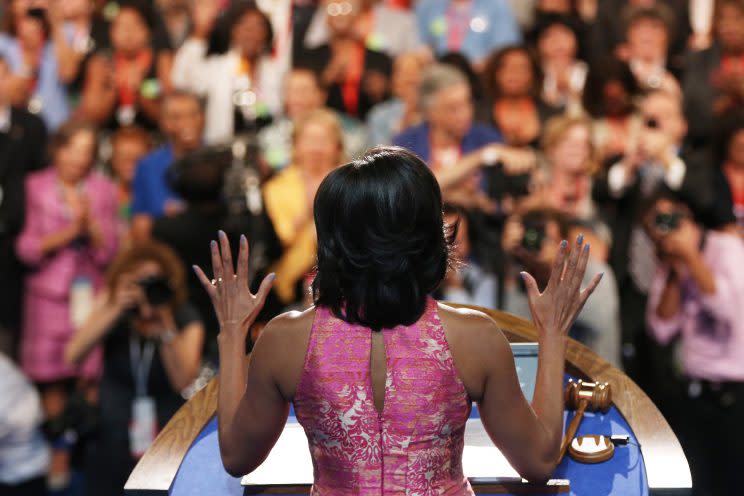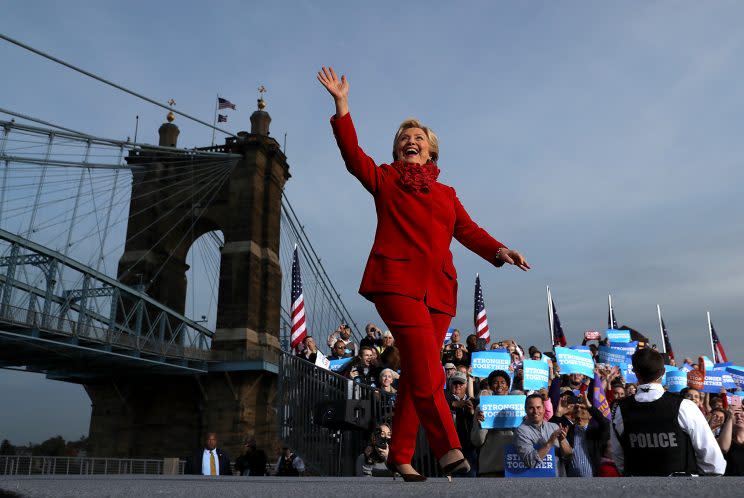What Powerful Women Are Wearing Now

It used to be that a woman in power had to dress like a man in power to be taken seriously — in dark blazers, pantsuits, and other drab, don’t-notice-me outfits. But those days are waning as an increasing number of women in leadership positions are dressing the way they want to, not like carbon copies of the besuited men in executive offices — and executive branches.
“I’m a woman, I like clothes. I like shoes,” said British Prime Minister Theresa May at the Women in the World summit last October. “It’s one of the challenges, I think, for women in politics, in business, in all areas of working life, is actually to be ourselves, and to say, ‘You know what, you can be clever and like clothes. You can have a career and like clothes. These are not separate.”
May’s fashion sense has been a source of media fascination since she took office in July. She is most recognized for her standout shoes, which are always statement making. She’s worn everything from lipstick-print ballet flats to patent leather over-the-knee boots to leopard-print kitten heels (the Sun headlined them “Heel, Boys”). Some of her countrymen criticize her interest in fashion, but others applaud it.
“Theresa May has a subscription to Vogue and the keys to No. 10 Downing Street and, unlike any of the post’s previous incumbents, she does not see a conflict in that fact,” Guardian columnist Imogen Fox wrote in a piece condemning the fashion-shaming May’s endured. First lady Michelle Obama was arguably the earliest to adopt, in politics at least, the idea that women in power don’t have to blend in with the men around them. She said goodbye to the skirt suits favored by previous first ladies like Laura and Barbara Bush as well as Nancy Reagan.

Instead, she’s worn colorful, often sleeveless dresses that have earned her style accolades from pretty much everyone in the country. Journalist Kate Betts wrote about her style — and what it means that the first lady isn’t afraid to be fashionable — in her book Everyday Icon: Michelle Obama and the Power of Style.
“Michelle Obama would not have made such a strong impression on the women of my generation if we had completely resolved the tensions of substance and style,” Betts writes. “Both of us were born in 1964 — the last year of the baby boom — and benefited from the pioneers of feminism who came ten and twenty years before us, women who shattered glass ceilings, occupied corner offices, and delivered on the seemingly impossible promise of having it all.”

“I got my aesthetic education like many kids growing up in New York City in the early 1970s,” she continues. “Style, like language, was something you absorbed unconsciously from the culture of the city itself. The style classrooms of New York were the city’s streets and art galleries, its nightclubs and rush-hour lobbies. New York then seemed full of trailblazing women who were conquering new professional worlds with their personal style in full bloom. Women like Barbara Walters reporting on the Today show about Vietnam, Gloria Steinem starting Ms. magazine, and Diane von Furstenberg launching her famous wrap dress. Looking back I can see that one of the reasons they stood out was that they were the exceptions not the rule. It wasn’t until I moved to Paris that I was fully immersed in a culture that understood style was substance, and that a lack of style could signal a deficit of substance…. But time and again I would run up against women who seemed more comfortable with style and substance inhabiting two separate worlds.”
Hillary Clinton, seen through the history of her clothing choices from her time as first lady up until her presidential nomination, perhaps best embodies the conflict between style and substance. As first lady, she stuck mainly to pantsuits. (If she added any flair, like a headband, she often found herself dodging critics who said she’d made a fashion misstep.) Later as both a senator and secretary of state, she tended toward no-nonsense from head to toe. As secretary of state, she was seen with her hair in a ponytail or without much makeup.

“I feel so relieved to be at the stage I’m at in my life right now,” Clinton told CNN while she was secretary of state. “Because, you know, if I want to wear my glasses, I’m wearing my glasses. If I want to wear my hair back, I’m pulling my hair back. You know at some point it’s just not something that deserves a lot of time and attention. And if others want to worry about it, I let them do the worrying for a change.” But now, during her run for president, Clinton seems to have reconciled that she can speak about and advocate for her political ideas and have a little fun with fashion too. Her suits are bolder, and the shapes less stiff, from the all white ensemble she wore to accept the Democratic nomination to the all red one at her second debate with Donald Trump. She’s worn mostly big designers like Ralph Lauren and Giorgio Armani but hasn’t shied away from some flair, like leather or beading. The end result is that she and much of America finally seem comfortable with her look.
“I think America, and the electorate, is finally ready to embrace that, the idea of women politicians wearing something that is fun and feminine, without it being an issue,” Lyn Paolo, the costume designer for Scandal and How to Get Away With Murder told the New York Times. “It’s about time.”
Follow us on Instagram, Facebook, and Pinterest for nonstop inspiration delivered fresh to your feed, every day.

